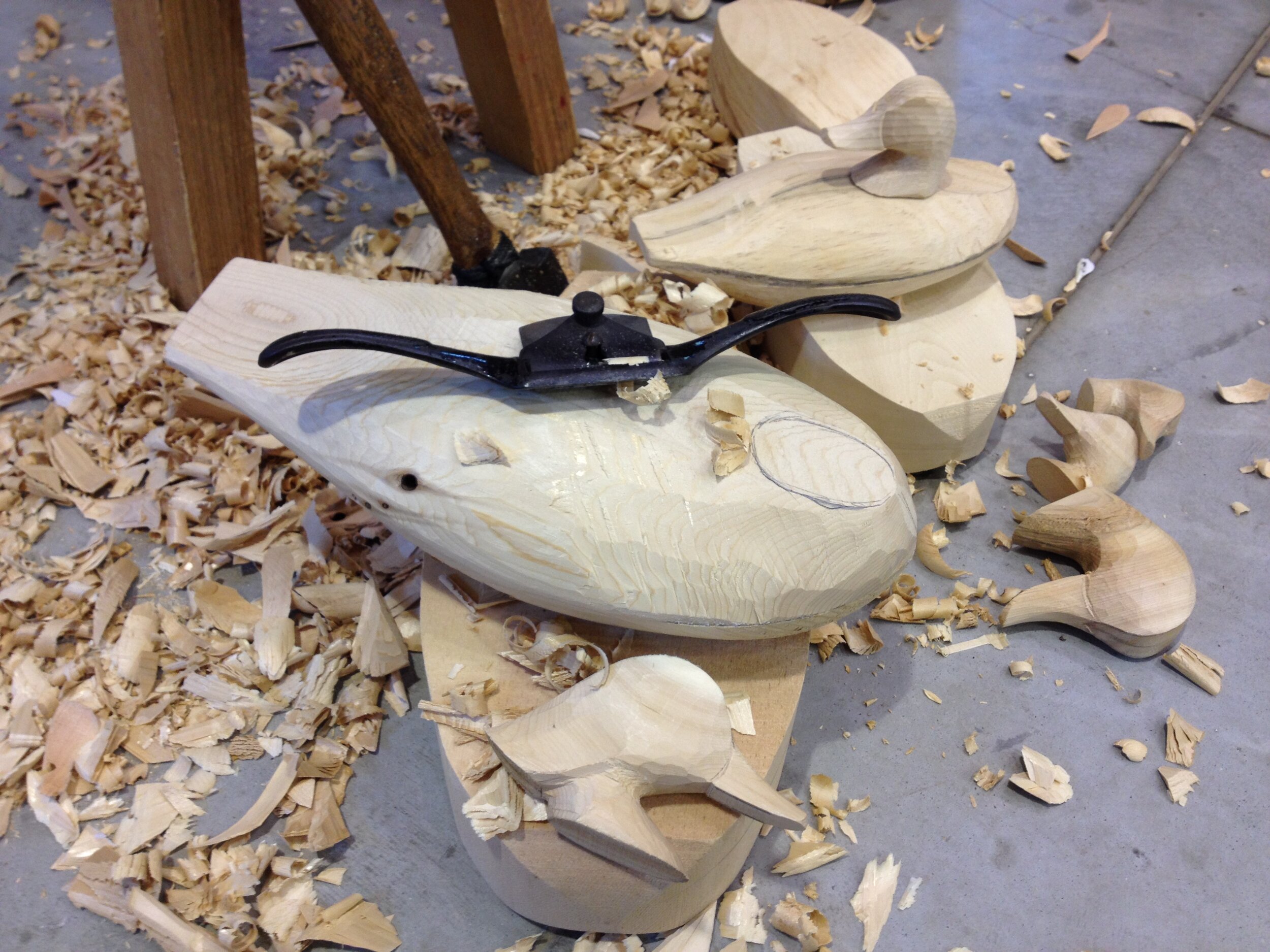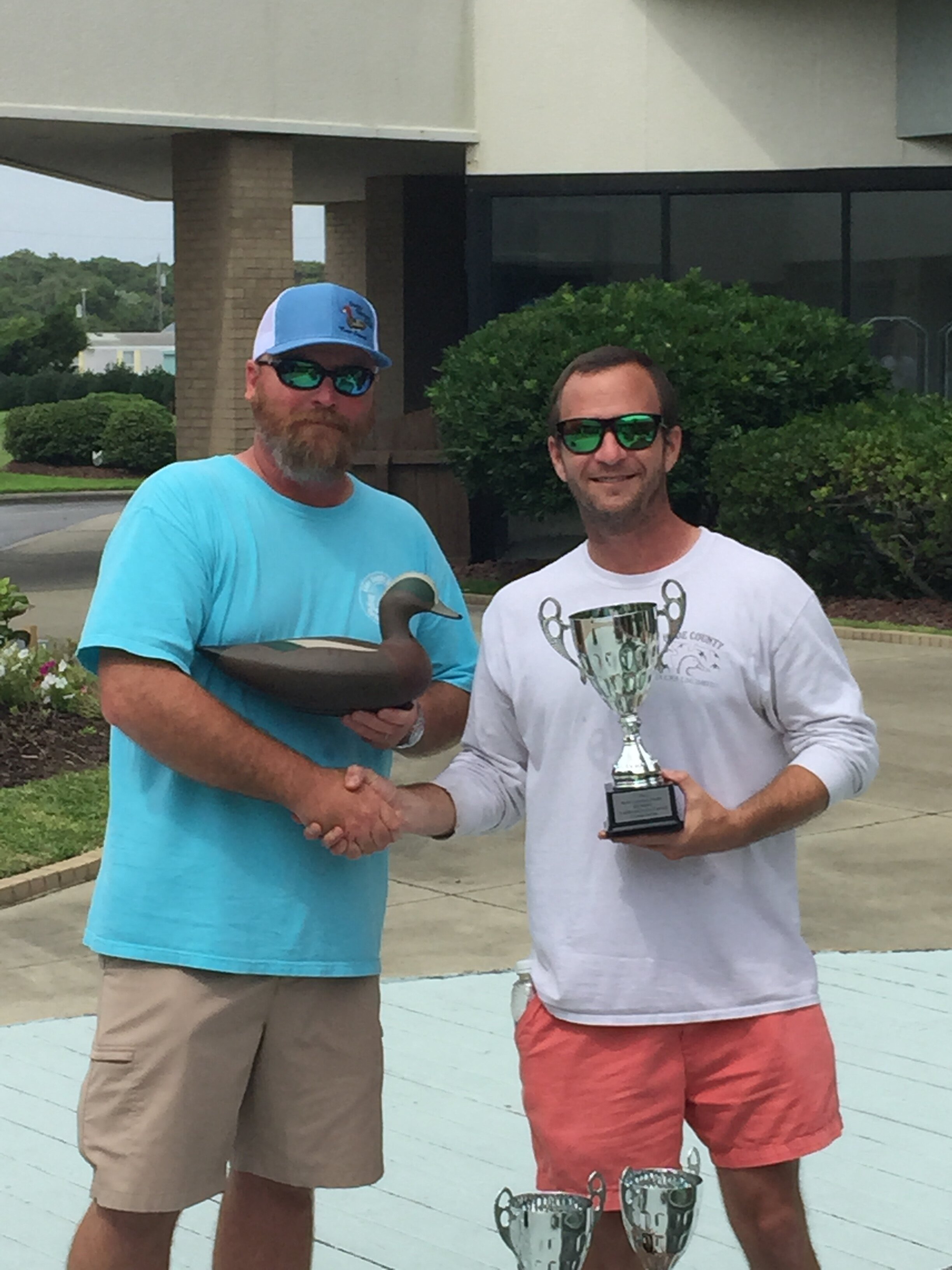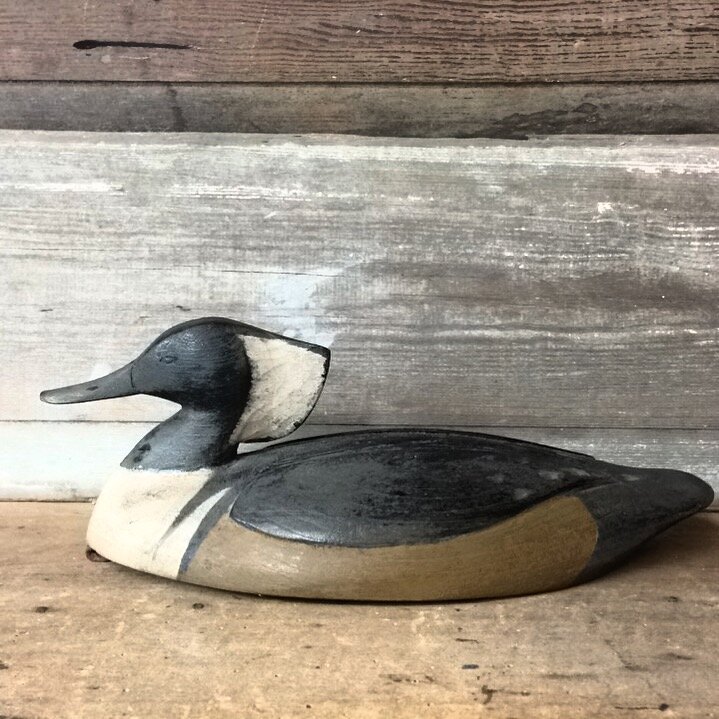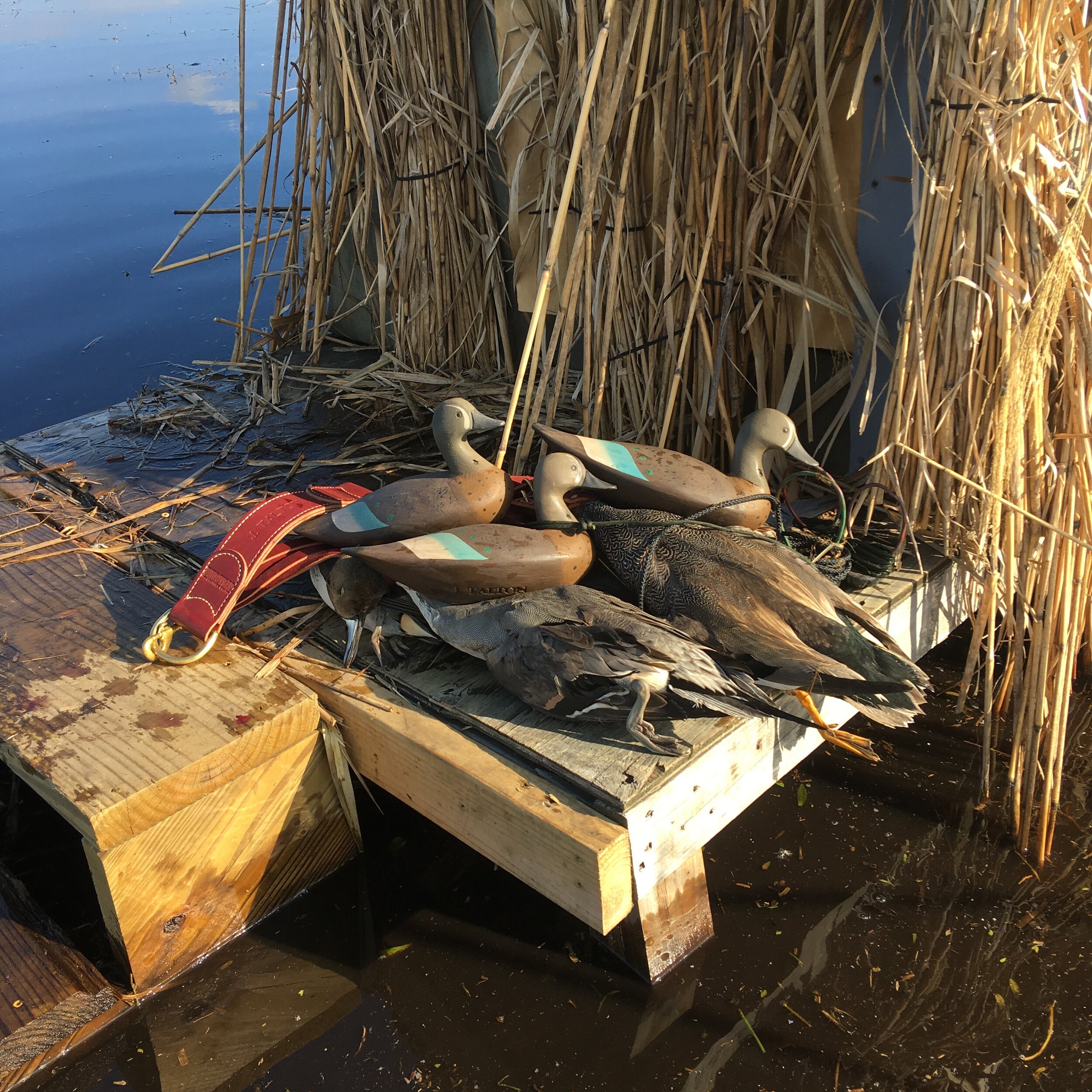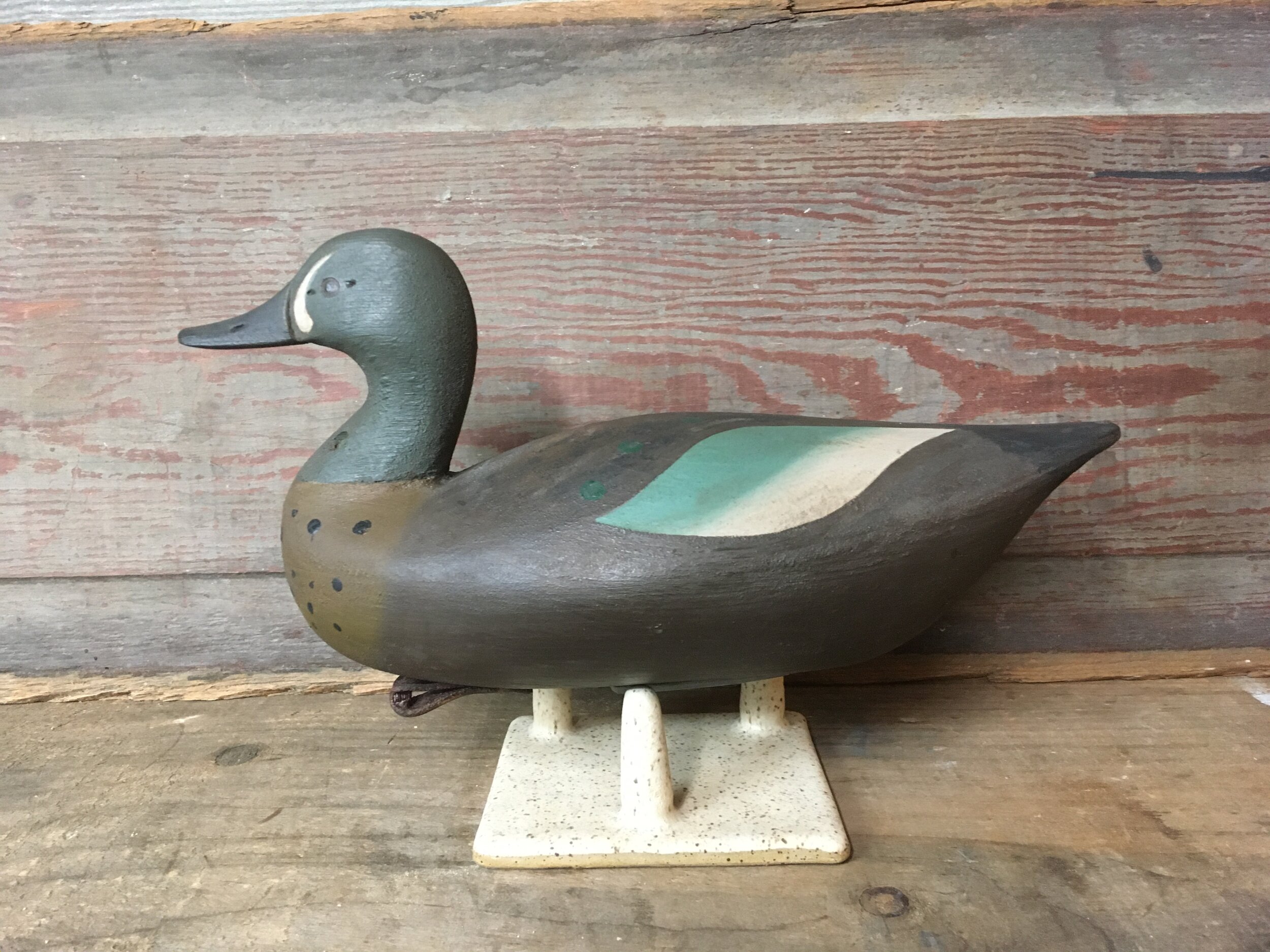Walker Davidson for SPLIT REED
Surfing is like duck hunting, you spend hours paddling a surfboard for a few seconds of riding a wave. Duck hunting is no different, you spend hours, weeks, months, preparing for a split second of pulling that trigger.” When I heard that, my first thought was, how does a guy, a renowned decoy carver, and experienced waterfowler, from eastern North Carolina, know a damn thing about surfing.
Well, Jerry Talton is your guy, and he knows plenty about surfboards and ducks and using his hands to carve the tools he uses to fool those ducks. Jerry got into decoy carving because he and his wife bought his brother a decoy for Christmas one year and after looking at it he said, “I can do this, it ain’t nothin’ but a surfboard with a head on it.” That coupled with his passion for history and liking to work with his hands made him a prime candidate for getting into the world of carving decoys. Jerry says making decoys, “is creating a piece of art that you’re going to use for life and pleasure.”
Part of waterfowling that most of us appreciate is the history and tradition, especially when it pertains to the areas you hunt in. On the east coast, carving decoys and market gunning make up their waterfowling history. Every region in the U.S. where decoys have been used and carved has its own style and those are described by said regions. Some of the most popular are Illinois River style, Long Island Style, and the style Jerry carves which are called Core Sound style decoys. The style Jerry Carves now is adapted from the men that lived and hunted in Core Sound. These men often hunted to live and carved these decoys so they could provide for their families whether it be for food or selling ducks at the market.
When people think about market hunting for ducks they often think about punt guns and battery guns and paddling into rafts of ducks and things of that nature. In Core Sound, however, no one really used these techniques, most market hunters in that area used a tool called a firelight, Jerry explained. They would mount a lantern on the front of their boats and eased it into the raft of ducks and then shot as many as they could. Essentially, they hid behind that light and the light did not really scare the birds. Most people used double barrel 10 gauge shotguns to do this. Old paperwork from the restaurants around there shows that the mainstays were mostly redheads and blackheads, (bluebills in the south, or scaup for you Yankees.)
Now back to carving decoys. I asked Jerry for a quick rundown of how he carves decoy start to finish. Here is what he had to say. “Figure out what species to carve and draw a pattern. Find a block of wood to fit the pattern. Cut the head and carve it out. Cut body out of a block, halve it and hollow it out and glue it back together. Attach head, finish carving. Paint it with oil-based paint. Attach a ballast, it’s important it floats right because I want to fool ducks. “
Then using traditional Core Sound techniques, an attachment for the anchor is added, either a nail, staple or the most common, a leather tab.
Jerry hunts big water for diving ducks following the same techniques most diver hunters use.
“Hunting the sound or river using big rigs of decoys, anywhere from 150-300 decoys. The wind is hopefully out of east or northeast, split decoys off to each side in two big wads and hope that they fly into the open area. Killing a duck is just like killing anything else, scout, pay attention, be where the ducks are. Using the same tactics in mountain west fields, potholes, and here on east coast lakes and river. Using decoys to move ducks a couple of hundred feet, just to get them in gun range. Calling is little to none, flagging seems to work better on the big open water. Not common to use calls, flags, or motion decoys for divers in eastern North Carolina.”

We then talked about the sport of duck hunting and what it means to him. Like most of us, he appreciates all the little aspects that make duck hunting what it is. “There’s people that duck hunt… there’s a lot of people that duck hunt, and then there’s waterfowlers.”
“You think about it all the time. Being a decoy maker is a way to make it last just a little bit longer, it is not what I do it is who I am. When I’m not making decoys or hunting ducks, it is what I am thinking about. It’s a culmination of nature and art that’s unlike anything else that I’ve really heard of. Then it works out and you kill some ducks. And then you have this beautiful creature from the sky that you get to go home and clean and eat. You can’t go through the drive-through and order three green-winged teal.”
If you are interested in purchasing a decoy or more information, contact Jerry. His email is jerrytaltondecoys@gmail.com




